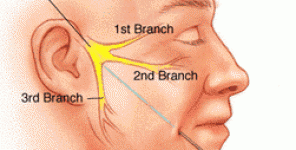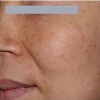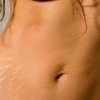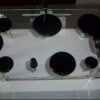Radiofrequenza multisorgente per la significativa riduzione delle rughe con resurfacing frazionale della pelle
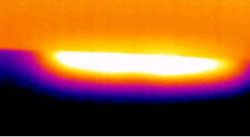 La rugosità della pelle, la variazione di colore, le rughe e la lassità cutanea sono le caratteristiche principali di invecchiamento della pelle.
La rugosità della pelle, la variazione di colore, le rughe e la lassità cutanea sono le caratteristiche principali di invecchiamento della pelle.
I dermatologi e i chirurghi plastici cercano da tempo un trattamento in grado di fornire sia resurfacing epidermico per il miglioramento della rugosità della pelle sia riscaldamento volumetrico del tessuto profondo che attivi il rimodellamento del collagene nel derma, al fine di ridurre le rughe e la lassità cutanea.
Questi obiettivi dovrebbero essere raggiunti con il minimi tempi di inattività e dolore. Metodi: Lo studio ha riguardato 10 soggetti (tipo di pelle 2-3 secondo Fitzpatrick) con la scala delle rughe e dell'elastosi di Fitzpatrick tra 5 e 8 (media 7.3). Il trattamento è stato effettuato con il dispositivo di resurfacing frazionale cutaneo del sistema a radiofrequenza multisorgente EndyMed PRO (EndyMed Ltd, Cesarea, Israele).
Il trattamento è stato ripetuto ogni mese fino a un totale di tre sessioni di trattamento. Le fotografie dei pazienti sono state classificate sulla base di scale accettate da un gruppo certificato di dermatologi. Il dolore dei pazienti e la loro soddisfazione sono stati valutati sulla base di questionari dedicati. È stata valutata anche la soddisfazione dei medici. Risultati: L'eritema cutaneo post-trattamento è stato osservato in tutti i pazienti trattati, ed è durato fino a 10 ore.
Il cinquanta sei per cento dei pazienti non ha riportato dolore dopo il trattamento, e il resto (44%) ha riportato un minimo dolore. Tutti i pazienti hanno mostrato una significativa riduzione nel punteggio delle rughe secondo Fitzpatrick. La valutazione media delle rughe Fitzpatrick è stata di 7.3 al basale, 4.9 dopo 1 mese dal primo trattamento, 4.2 un mese dopo il secondo trattamento, e 4.1 dopo 1 mese dal terzo trattamento. Il punteggio è stato simile dopo 3 mesi dal terzo trattamento con un punteggio di 4.1.
Quando è stata chiesta una valutazione alla fine delle tre sessioni di trattamento, tutti i pazienti hanno risposto che avrebbero consigliato il trattamento ai loro amici (66% "decisamente sì" e 33% "sì"). Quando è stata posta la stessa domanda dopo 3 mesi dalla fine del trattamento, tutti i pazienti (100%) hanno risposto "assolutamente sì".
Storia della pubblicazione:
Titolo: Multisource radiofrequency for fractional skin resurfacing–significant reduction of wrinkles
Rivista: Journal of Cosmetic and Laser Therapy. doi:10.3109/14764172.2012.748205
Autori: Serge Dahan, Isabelle Rousseaux e Hugues Cartier
Affiliazioni: Clinique St Jean Longuedoc, Toulouse, France
Cabinet de Dermatologie Esthétique, Lille Côté Sud, Loos, France
Centre médical Saint Jean, Arras, France
Correspondence: Dr Serge Dahan, MD., Clinique St Jean Languedoc
Abstract: Background: Skin roughness, color change, wrinkles and skin laxity are the main characteristics of aging skin. Dermatologists and plastic surgeons look for a treatment that will provide both epidermal resurfacing for the improvement of skin roughness and deep volumetric heating that will trigger collagen remodeling in the dermis to reduce wrinkles and skin laxity. These goals should be achieved with minimal pain and downtime. Methods: The study included 10 subjects (Fitzpatrick's skin type 2–3) with Fitzpatrick wrinkle and elastosis scale of 5–8 (average 7.3). Treatment was done with the Fractional skin resurfacing handpiece of the EndyMed PRO multisource radiofrequency system (EndyMed Ltd, Cesarea, Israel). Treatment was repeated each month up to a total of three treatment sessions. Patients photographs were graded according to accepted scales by a board certified dermatologists. Patients' pain and satisfaction were scored using dedicated questionnaires. Doctors' satisfaction was also evaluated. Results: Post treatment skin erythema was noted in all treated patients, lasting up to 10 hours. Fifty six percent of patients reported no pain after treatment, and the rest (44%) reported minimal pain. All patients showed significant reduction in the Fitzpatrick wrinkle score. Average Fitzpatrick wrinkle score was 7.3 at baseline, 4.9 at 1 month after the first treatment, 4.2 at 1 month after the second treatment, and 4.1 at 1 month after the third treatment. The score was similar at 3 months after the third treatment with a score of 4.1. When asked at the end of three treatment sessions, all patients answered they will recommend the treatment to their friends (66% "definitely yes" and 33% "yes"). When asked the same question 3 months after the end of treatment, all patients (100%) answered "definitely yes".
